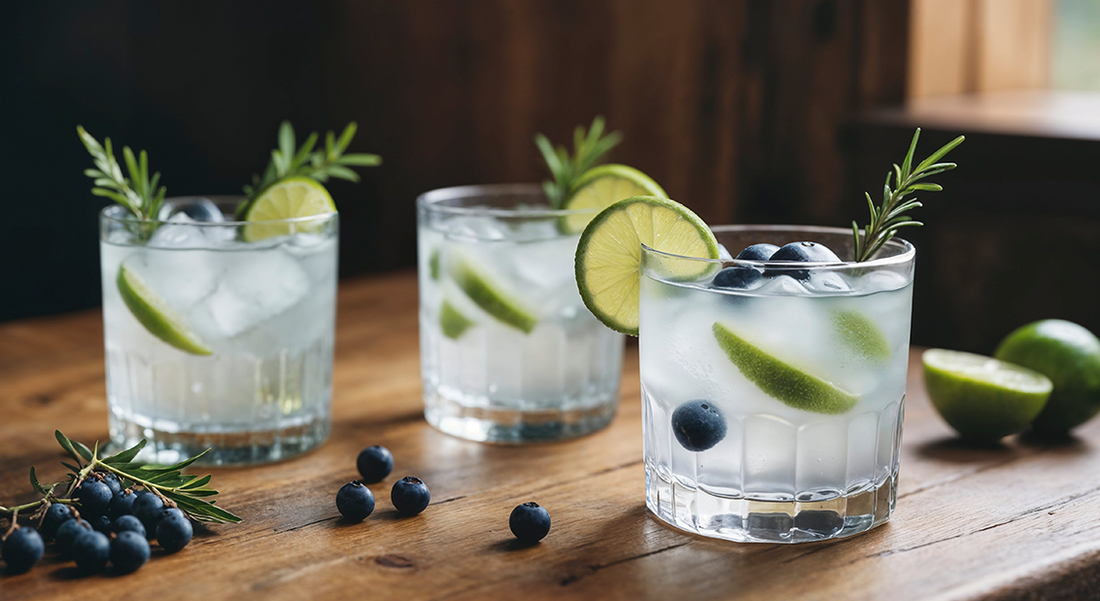
7 Gin Facts Every Gin Lover Should Know
Gin is one of the quintessential and versatile spirits in the world — a classic that rarely goes wrong with anything! But how much do you really know about your favourite spirit? These fascinating gin facts will make you fall in love with it even more. So, let’s dive into the surprising world of gin — and don’t forget to share these fun facts with your gin-loving friends!
#1 Juniper: The Soul of Every Sip
Without juniper berries, gin simply wouldn’t be gin! These tiny seed cones from the juniper plant are the secret behind gin’s signature piney kick and fresh citrusy notes. It's the juniper that gives gin its unique character — bold, refreshing, and unmistakably one-of-a-kind. So next time you check a gin’s ingredients, make sure juniper tops the list — otherwise, you’re not tasting the real deal!
#2 A Dutch Discovery: Where Gin Began
While the majority of gin lovers think it's a "British thing", this iconic spirit originally hails from Dutch. Initially known as "genever" in the Dutch which actually means Juniper, this finest spirit type dates back to the 16th century. In the 17th century, British soldiers found genever and carried it back to England, where it turned into the modern gin. So next time someone around you calls it a British spirit, don’t hesitate to reply this straight — it’s Dutch at heart!
#3 Ancient Tonic: Gin’s Medicinal Roots
Well, this one can surprise you for sure! Gin wasn’t always an alcoholic beverage to enjoy in bars, originally it was prized for its medicinal qualities. Back in the 17th century, physicians used juniper berries to treat several health issues related to digestion and kidney problems. They created an early form of gin by combining juniper with neutral spirits which eventually became a popular remedy. Surprising isn't it? Who knew that gin’s refreshing taste might have been a medicine or cure back in ancient times?
#4 The Gin Craze: A Tragic Wave in London
While said medicine could be addictive, this wave of medicinal spirit swept through London and led to what became known as the Gin Craze in the 18th century. With the cheaper rates in shops and bars and the mass production, it became a highly consumed drink, especially in the poorer areas of the city. The craze was so intense that it even led to social unrest, prompting the government to restrict gin production and consumption. Despite the social issue, gin's popularity skyrocketed, firmly establishing its place in British culture.
#5 Mother’s Ruin: A Spirit with a Wild Past
Yes, it’s exactly what it sounds like — 'Mother’s Ruin' became the second name for gin back in the 18th century. The term gained a reputation for being a cause of social disorder and even ruining families. The cheap drink was especially appealing to women and was thought to be an outcome of poverty and domestic abuse. But over a period of time, gin's image was restored, and it is now regarded as a refined, popular alcoholic beverage.
#5 The Philippines Is the World's Biggest Gin Market
This might come as a shock to gin enthusiasts, as some may think that gin is highly populated in Europe but, it's actually Southeast Asia where the Philippines tops the list as the world's largest consumer of gin. This refreshing spirit has been embraced in the Philippines because of its tropical climate and long history of producing alcohol. Filipino gins have a unique flavour since they are frequently brewed with regional ingredients like calamansi, a citrus fruit. Rich in tradition, the gin culture in the Philippines is still thriving today.
#6 Born in India: The Legendary Gin and Tonic
Gin lovers should know the popular gin and tonic, right? But do you know where this idea actually came from? So, here is another interesting fact about the iconic gin and tonic that has deep roots in colonial India, where British officers mixed gin with tonic water to cut the bitter taste of gin which is then consumed for treating malaria. Quinine-containing tonic water was used as a therapeutic remedy for the illness, and the gin helped to make it a little more edible. So the gin and tonic was created, and it soon became a favourite among British expats and, eventually, gin enthusiasts all over the world. These days, it's a staple spirit at bars and pairs well with anything.
#7 Over 100 Varieties of Botanicals Used in Gin Today
Over 100 varieties, isn't this amazing? Gin is a limitless spirit when it comes to flavours. This is an actual fact that over 100 types of botanicals are used in crafting gin, giving each brand and type its unique taste profile. From the classic juniper and citrus to more complex herbs and spices like lavender, cinnamon, and even floral aromas, the diversity of botanicals means there’s a gin out there that delights every palate. Whether you're into light and floral gins or bold and spicy ones, the options are just endless!
These facts aren’t just facts — they’re your ticket to making every sip even more exciting and joyful! With Liquor Loot, you can explore the world of the finest gins through our incredible selection of premium gins available online in Australia. Whether you’re new to gin or a passionate fan, our collection will amaze you just like these 8 fascinating facts did! So, grab your favourite bottle right here and share these gin facts with your friends and family over a perfect pour!












